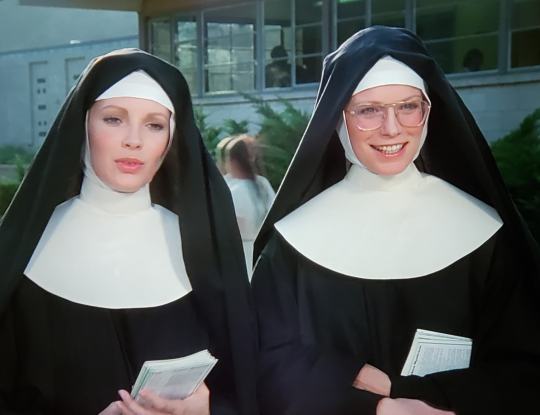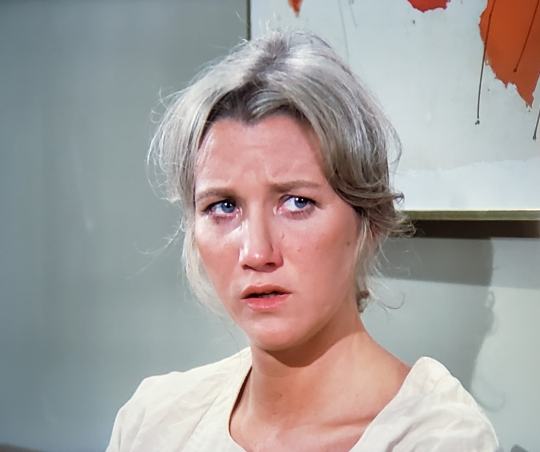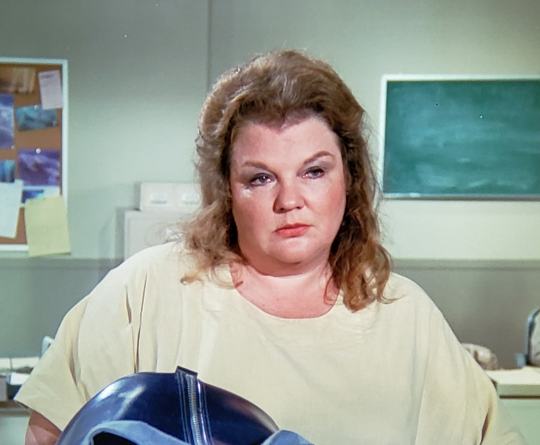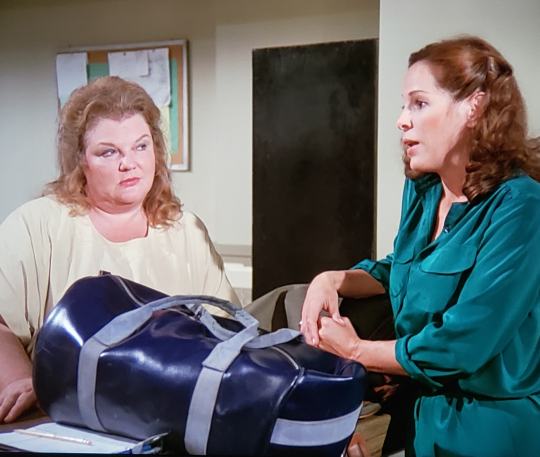#agnes sorel
Explore tagged Tumblr posts
Text










Medieval Women Week || Favorite royal mistress ↬ Agnès Sorel
Tradition holds that Agnès Sorel rose “in golden glory like a phoenix from the ashes of dark centuries” to wield “political influence over country and king.” Charles VII laid eyes on her for the first time in 1443 and, within a year, set her up in a household that upstaged the queen’s. For six years, he showered her with gifts and accorded her unprecedented political influence. She then abruptly died of a massive overdose of mercuric chloride. Historians often regard Agnès as the first “official” mistress of a French king. A recent study explains that “in 1444, Agnès Sorel became the first officially designated French royal mistress, when the forty-year-old king Charles VII (1422–1461) selected this extraordinarily beautiful twenty-two-year-old young woman as his mistress. When he presented her to his court and gave her a position within it, he defined a new role for women and defined a new practice for French kings. This recognition . . . gave her a quasi-official status.” One would want to know in what sense Agnès was the first “officially designated” French royal mistress and what the author’s source for the claim is. But it is not footnoted. Later in the text we read that during a “joyous entry” of the same year the king “publicly designated Agnès Sorel as the first official royal favorite.” Once again, there is no footnote. Such impasses are common in the scholarship on Agnès. Any discussion of Agnès’ significance during her lifetime, then, must begin by returning to the sources to see what they actually say. Relative to the other royal mistresses, her career is sparsely evidenced. A handful of documents record the king’s donations to her and others on her behalf, and some mentions in court records are suggestive of her political influence. The physical evidence of her tomb and bones is also significant. We will return to these. But because the resident ambassador did not yet exist, we have none of the detailed letters of daily court life that fill in so much of what we know about the careers of later mistresses, and the genre of the memoir that brings to life the intrigues of later courts did not yet exist. The main source of information on Agnès is the chronicle, which we explore in the first section of this chapter. It is important to recognize that chronicles do not necessarily give an accurate picture of Agnès’ role. Still, they do make clear that the attention the king paid her was perceived as extraordinary, the position he awarded her far above what she deserved. — The Creation of the French Royal Mistress: From Agnès Sorel to Madame Du Barry by Tracy and Christine Adams
#medievalwomenweek#agnes sorel#house of valois#french history#european history#women's history#history#medieval#nanshe's graphics
36 notes
·
View notes
Text
[Agnès Sorel] has been paired with her cousin Antoinette de Maignelais in a binary relationship that flatters the former at the latter’s expense.
— Tracy Adams, Queens, Regents, Mistresses: Reflections on Extracting Elite Women’s Stories from Medieval and Early Modern French Narrative Sources
Different from her nineteenth-century historians, contemporary chroniclers write little that is positive about Agnès Sorel, except that she was beautiful. They are still less enthusiastic about Antoinette de Maignelais. Antoinette’s reputation worsens in seventeenth-century historical romances, where she becomes Agnès’s dark and envious double, sometimes responsible for Agnès’s death. Following Antoinette into the nineteenth century, we find nothing good about her in histories of that period, either, where she is typically depicted as motivated by the desire for wealth. […] Even some recent historians read the cousins in this way. According to one, Agnès’s “replacement was greedy and cynical;” in contrast with Agnès, who had “brightened the maturity of a fragile and tormented man, raising him above himself, Antoinette lowered him to the level of a lustful old man whose excesses outraged his entourage.”
The difference in the reputations, or afterlives, of the cousins is striking. Several factors can explain the discrepancy. The first, as I have noted, is that Antoinette later became the mistress of Duke François II. Breton chroniclers did not describe Antoinette favorably, and the relationship undoubtedly diminished her prestige, suggesting that she was motivated by greed rather than love. In contrast, Agnès died at the height of her glory, adored by the king. Another factor is the Melun diptych, commissioned from painter Jean Fouquet by one of the executors of Agnès’s will and royal favorite Etienne Chevalier, whom we have just seen with Antoinette and the king at the chateau of Ville Dieu. This gorgeous Virgin with child depicted on the left panel of the diptych is said to bear the facial features of Agnès. The image has left an enduring impression of Agnès as both pure and erotic. No image at all memorializes Antoinette, much less a fabulous one like the Melun Virgin. Still another is that Charles VII never married Agnès to anyone, which might suggest a particularly deep affection; in the eyes of historians over the years, the “double” adultery of Antoinette and the king has been regarded as the more sinful of the two relationships.
In addition to these factors, as I have noted, the king fathered none of Antoinette’s children: two of her sons, Artus and Antoine, were fathered by André de Villequier, and two sons and two daughters by Duke François II of Brittany. The king recognized his three daughters by Agnès, and all were handsomely married. This matters because Agnès’s daughters and their families took the lead in shepherding Agnès’s positive image into future generations.
...The Agnès/Antoinette binary, like its Marie/Eve counterpart, allowed the role of the royal mistress to be conceived of positively, anchoring the role in its positive guise to Agnès while pushing negative associations onto Antoinette. For the long-term effect of the binary I return to the narrative of the French royal mistress as it emerged in the nineteenth century, when Agnès and Antoinette became the two essential faces of the role: Agnès as the ideal that justifies or hides Antoinette, the political reality, or, put slightly differently, Agnès as the loving mistress persona giving cover to Antoinette, the political actor. Agnès and Antoinette, beautiful muse versus greedy opportunist, combined, offer a perfect standard for distinguishing the good mistress from the bad and promoting the good. For this reason, Antoinette’s role might be considered a sort of supplément to the role of royal mistress as realized by Agnès, who was typically assumed to have been little interested in politics. Antoinette might be seen as the active element required to complete the role; the cousins together add up to the French royal mistress of the later type.
#I love Antoinette a lot#historicwomendaily#Antoinette de Maignelais#agnes sorel#Agnès Sorel#french history#Charles VII#my post#queue
25 notes
·
View notes
Text
I’m afraid I must be physically restrained from purchasing this and hanging it up with a decal that reads “QUEEN JANE SEYMOUR 1509-1537”

#Babe!!!!! My beautiful princess with a disorder (aristocracy)#this is actually supposed to be Agnes Sorel if anyone’s wondering#jane seymour#Agnes Sorel
2 notes
·
View notes
Text

Favorite royal mistress: Agnès Sorel
4 notes
·
View notes
Text
Day 3: Tuesday, 9th July — Favorite royal mistress (yes, you can still count women who later married their royal lover):

Agnès Sorel (born c. 1422, Fromenteau, France—died Feb. 9, 1450, Anneville) was the mistress (1444–50) of King Charles VII of France, sometimes known as “Dame de Beauté” from the estate at Beauté-sur-Marne, which he gave her.
Born of a family of the lesser nobility at Fromenteau in Touraine, Sorel was attached at an early age to the service of Isabel of Lorraine, queen of Sicily and wife of René of Anjou, who was the brother-in-law of Charles VII. From 1444 until her death in 1450 she was the acknowledged mistress of the king, the first woman to hold that semiofficial position which was to be of so great importance in the subsequent history of the old regime. Her ascendancy dated from the festivals at Nancy in 1444, the first brilliant court of Charles VII. There her great beauty captivated the king, whose love for her remained constant until her death. He gave her wealth, castles, and lands and secured for her the state and distinction of a queen. This first public recognition of his mistress by a king of France scandalized people and awakened jealousy and intrigue. Her sudden death from dysentery, shortly after the birth of her fourth child, was accordingly attributed to poison. Burgundian historians even openly accused the dauphin, afterward Louis XI, of her death, and later the enemies of Jacques Coeur, in their search for crimes to be brought against him, used this rumour to charge him with the one crime most likely to turn the king against him.
Legend has made an entirely different character of this first official mistress of the French kings. The date of her birth was placed at about 1409, her liaison with the king dated from 1433. Then, so the story ran, she drew him from his indolence, continuing the work of Joan of Arc, both by nerving the king to warlike enterprises—she did apparently induce him to take part personally in the conquest of Normandy—and by surrounding him with that band of wise advisers who really administered France during her ascendancy. Later investigation exploded this romantic story by simply showing that Charles VII had not met her until 10 years later than the time of the legend.
3 notes
·
View notes
Text

12 notes
·
View notes
Text

























L'épisode "La cage aux dames".
#jaclyn smith#kelly garrett#cheryl ladd#kris munroe#david doyle#john bosley#tiffany welles#shelley hack#louise sorel#lily burton#shirley stoler#agnes kemp#sally kirkland#lonnie#La cage aux dames
4 notes
·
View notes
Text
Agnes Sorel Coiffure
The Definetion of Agnes Sorel Coiffure The Anges Sorel coiffure was a woman hairstyle design with ribbon bands in the front and tie in a knot on the back. The was worn during the 1830s to 1850s
0 notes
Text






I´m curious to understand what led perfectly proper upper-class ladies of the mid to late 18th century to pose half-topless, especially when it comes to non-fantasy portraits. I wonder if this happened in pictures alone, or if it was equally usual in real life (as it was back in Agnes Sorel´s time). Not wanting to lie, I recently did a quick search and got something along the lines of "a suggestion of a nipple peaking through the decolletage being considered delicate and chic".
1 and 2- Duplessis, Portrait of the Princess de Lamballe (1780s-1792)
3- Vladimir Borovikovsky, Portrait of Elizabeth Grigoryevna Temkina, 1798
4- Jean Baptiste Greuze, c.1780, Le Chapeau Blanc.
5 - Marie-Victoire Lemoine, Portrait de Madame [Comtesse]de Genlis, 1781
6 - Jean-Marc Nattier, Marie-Anne de Nesle, Marquise de La Tournelle, Duchesse de Châteauroux, 1740
48 notes
·
View notes
Text

Agnese Sorel nació en la primera mitad del siglo XV de una familia de la pequeña nobleza provincial, al servicio de la nobleza angioína. El padre era Jean Sorel (o Soreau), señor de Coudun cerca de Compiègne, y la madre Catalina de Maignelais, castellano de Verneuil-en-Bourbonnais. Agnese tenía cuatro hermanos: Carlo, Andrew, Giovanni y Luigi.
En Piccardia recibió una educación precisa para prepararse para cubrir en la corte la envidiable tarea de la doncella de Isabella di Lorena, esposa del rey de Nápoles, Renato d'Angi zione. La joven belleza de la nueva doncella de la corte, Agnès, pronto fue notada por el rey Carlos VII. El Gran Siniskalco de Angio, Poitou y Normandía, Pierre de Brézé, la introdujo al gobernante y en 1444 Inés pasó del rango de dama de honor de Isabel de Lorena al de la primera dama no oficial del reino de Francia, convirtiéndose en howev er fuerte mal dama de honor de la casa de la reina de Francia, María de Angio. Ella tenía el estatus de la favorita oficial del rey, que era una gran noticia en la corte, ya que hasta entonces los reyes de Francia tenían que permanecer en las sombras. Carlos VII también tuvo otros amantes, pero ninguno de ellos tenía la importancia de Inés. Su arte de vivir y su extravagancia pronto llevaron a la reina a la corte bajo segunda luz. Los velos y otros arneses fueron abandonados: Agnes "inventó" el escote de hombros desnudos, definido como "licensividad y absolutitud" por algunos historiadores religiosos de la época. Las pirámides mareadas superaron su peinado y las perchas de hasta ocho metros de largo alargaron su elegante ropa adornada con bordes preciosos en pieles de mártir o marta. Sólo en 1444 Carlos VII le dio joyas por valor de veinte mil seiscientos escudos, incluyendo el primer diamante cortado conocido en ese momento. Para obtener sus preciosos adornos, se convirtió en la mejor clienta de Jacques C œur, el gran platero del rey y comerciante internacional de gemas. Ella consumía una gran cantidad de sustancias finas, inmediatamente imitadas en esto por las otras damas de la corte. El Delfín, futuro Luigi XI, no lo soportó y afirmó que se burló de su madre. Un día la persiguió, con una espada en su puño, por los apartamentos reales: Agnes logró escapar de él sólo refugiándose en el dormitorio del rey. Molesto por tal descaro, Carlos VII echó a su hijo fuera de la corte, enviándolo a gobernar el Delfinato. Ella dio al gobernante cuatro hijas y murió dando a luz hasta la última. Unos días después de su último parto, Agnes fue golpeada por un "fluido en el estómago", según el corresponsal oficial de la corte Jean Chartier, y pocas horas murió recomendando su alma a Dios y a la Virgen María. Oficialmente Agnese murió de fiebre puerperal. La rapidez de su muerte le hizo creer que era envenenamiento. El joyero Jacques Coeur, su albacea, fue culpado por esto, pero fue absuelto inmediatamente. Los sospechosos apuntaron al Delfín, un enemigo del partido que ella apoyaba. Desolado, el rey arregla la ejecución de dos magníficas tumbas de mármol: una, que contiene el corazón de Agnese, se encuentra en Jumiege, la otra, que contiene el cuerpo, se encuentra en Loches, en el Colegiale di Sant'Orso (en aquel momento llamado Notre-Dam e de Loches) y recibir el epitafio: Aquí yace la noble dama Agnese di Seurelle, señora viviente de Beaulté, de Roquecisière, de Issoudun y de Vernon-sur-Seine, misericordiosa con todos y que generosamente dio algunos de sus bienes a las iglesias y a los pobres; que pasó en el año de g carrera MCCCCXLIX. Reza a Dios para que su alma descanse. Amén"
Web
2 notes
·
View notes
Text
“The custom of calling [Agnès Sorel] the first “maîtresse-en-titre” or the first “official royal mistress,” as the expression is typically rendered in English, make it is easy to overestimate her visibility during her lifetime. But despite the claims of modern historians, the expression “maîtresse-en-titre” was manifestly not invented for Agnès Sorel. No contemporary document refers to her in that way. Indeed, the word “maistresse,” to designate a beloved woman whom one was courting or hoping to marry, begins to appear only later. [...] The composite expression “maîtresse-en-titre” becomes common only around the mid-eighteenth century as a general way of designating a favorite or current mistress, used to refer to the king’s favorite mistress but by no means restricted to this use.
Agnès, then, is never referred to as anything like official mistress. The titles that she held were associated with the properties given her by the king: she was the Dame de Beauté, Roquecezière, Issoudun, and Vernon-sur-Seine, although it is not clear that she actually exercised any real control over these towns. Another thing that the documents do not say is that Agnès was publicly acknowledged as the king’s mistress; it is not true as one historian writes, that in 1444, the king “publicly designated Agnès Sorel as the first official royal favorite” during a joyous entry. There is no trace of such a presentation in any document. Nor was she ever mentioned as the center of attention at any festival [...]
Still, chroniclers were aware of Agnès, and the attention that she receives from them far surpasses that devoted to any other woman of comparable rank of her time. As a basis of comparison, we might take the mistress with whom Charles VII’s father, the insane Charles VI, was supplied to protect the queen from the abuses that he showered on her. Odette de Champdivers figures in exactly one chronicle and then not even by name. The chroniclers who mention Agnès and were either rough contemporaries or active within about fifty years after her death and therefore able to consult people who had known her include Thomas Basin; Jean de Bourdigné; the Bourgeois of Paris; Jean Chartier; Georges Chastellain; Jean Le Clerc; Jacques Du Clercq; Mathieu d’Escouchy; Robert Gaguin; Nicoles Gilles; Jean Juvénal des Ursins; Olivier de La Marche; Thierri Pawels; Pope Pius II, Aeneas Sylvius Piccolomini. With one exception, Jean Chartier, who claims that the king never touched Agnès below the chin, they affirm that Charles VII loved Agnès madly, that she was beautiful, and several note that the king bestowed inappropriate material favor upon her.
For a hint of her political activity we can turn to Olivier de La Marche, Burgundian memoirist and chronicler, who writes in an entry about negotiations that took place in May and June 1445 that the king had recently taken up with a beautiful lady and that she did much good for the kingdom “by bringing before the king young men-at-arms and excellent companions, by whom the king has since been well served.” This suggests that she was able to influence the king’s appointments. In addition, we have mentions of her influence over the king in three depositions, each related to court factionalism and plots to overthrow the king along with Pierre de Brézé, his righthand man and the dauphin’s nemesis. One recounts, for example, that Pierre de Brézé controls the king through “that Agnès who serves the queen.” In another set of depositions relative to a different bit of political intrigue, the deponent refers to Pierre who has the king’s ear partly through the help of Agnès, “from whom Pierre has whatever he wants.” The same document says that the deponent had been instructed to inform the king that the dauphin was so upset with the king that he, the dauphin, was going to put things in order himself and chase Agnès away. In addition, the deposition lists code names for members of the court. Agnès’s is Helyos: Héloïse? The sun?
Agnès unexpectedly joined the king in Normandy in January 1450, having crossed France, pregnant, to tell him, according to one chronicler, that he was about to be betrayed by some of his people and turned over to the English. She then fell mortally ill of what we now know was a sudden ingestion of a massive amount of mercury. Certain chronicles reference the dauphin’s hatred of Agnès and a handful of sources suggest that he had her poisoned. Simply the fact that contemporaries thought that the dauphin might have done her in indicates a perception that she was influential.
The evidence adds up to what may have been clout with the king, but a profile so low that no ambassador was ever given instructions to seek her out, or, at least nothing indicates that any ever did. Nor is her presence ever mentioned at festivals, something that would have suggested her importance. Ambassadors to François I’s court, for example, routinely mention that François’s most significant mistress, the Duchess of Étampes, was present at court festivities, often mentioning where she was seated and with whom she spoke. But Agnès’s presence at such events was never noted.
— Tracy Adams, Queens, Regents, Mistresses: Reflections on Extracting Elite Women’s Stories from Medieval and Early Modern French Narrative Sources
#historicwomendaily#french history#agnes sorel#Agnès Sorel#charles vii#I keep seeing these myths of Agnes getting thrown around so mindlessly and it's incredibly frustrating#Tracy Adams is 💜#15th century#my post#queue
14 notes
·
View notes
Text
Having recently read Thomas Costain’s The Black Rose, I have now also finished another Costain historical fiction novel, The Moneyman. To (very) briefly summarize, The Moneyman is the story of a real-life figure, Jacques Cœur, a merchant raised to the nobility by King Charles VII of France and made the king’s chief finance minister and one of his closest advisors, only to be disgraced and exiled after a false accusation of murder is laid against him by that same king. As I mentioned in my last post, The Moneyman is supposedly GRRM’s favorite of Costain’s works, so I was very intrigued to see if GRRM would borrow any ideas or character models from The Moneyman for his Westerosi works.
Unfortunately, once again I find very little to parallel with ASOIAF. The titular Moneyman himself might be as rich as Littlefinger, but the charges of embezzlement falsely levied against Cœur would be all too accurate if laid at Littlefinger’s door. Indeed, Cœur's deep, honest, but not sycophantic loyalty to Charles VII - a willingness to tell the king the truth coupled with a desire to look out for the best interests of the kingdom - could not be more alien to Littlefinger, whose selfishness and dishonesty are central to his personality. (In fact, the closer parallel to the Moneyman might be someone like Enguerrand de Marigny of The Accursed Kings.) I suppose you could compare Cœur to say, Davos Seaworth - the honest common man raised to the nobility by a grateful king - but Cœur is, well, defined by his substantial personal fortune in a way Davos obviously is not (because he has none, of course), nor can Charles VII’s petty jealousy of Cœur's wealth (and his subsequent willingness to condemn his devoted servant on trumped-up charges) be compared to anything in the relationship between Davos and Stannis.
Now, is it possible that GRRM took a bit of inspiration from Cœur's trial at the end of the book for Tyrion’s trial at the end of ASOS? Maybe. Just as Tyrion was falsely accused of poisoning Joffrey, Coeur is falsely accused of poisoning Lady Agnes Sorel, the beloved mistress of King Charles. In both cases, the author makes very clear that the accused was not in fact guilty of the crime by setting the reader in the accuser’s point of view at the time of the supposed poisoning, while simultaneously using circumstantial and/or outright fabricated evidence to make the case against the accused seem that much more damning. (Nor, indeed, is an explanation lacking in either case: the author makes clear many times, through Cœur as well as other characters, that Agnes Sorel is too sickly to live long, while Littlefinger explains the Joffrey poisoning plot to Sansa in pretty plain terms after the Purple Wedding.) Just as Tyrion’s physical proximity to and post-murder handling of Joffrey’s wedding cup helped sell the testimonies to his guilt at his trial, so Coeur’s administration of medicine to the dying Agnes Sorel is used by the prosecution to portray Coeur as a fiendish poisoner. Too, much as Taena Merryweather falsely testified that she had seen Tyrion pour poison into Joffrey’s cup, followed by Shae's false testimony as to Tyrion and Sansa’s allegedly conspiracy, so on the stand at Cœur's trial Jeanne de Vendôme fabricates an elaborate story of poisoning which she supposedly witnessed firsthand. Additionally, just as Pycelle (correctly) reported that Tyrion had taken poisons from his stores in order to falsely suggest that Tyrion gave poison to Joffrey, so one witness at Coeur’s trial - a doctor whom Cœur privately derides as a “great windbag … pedantic and opinionated and yet at the same time servile to all forms of authority”, not too far off the mark from Pycelle himself - seizes on Cœur's real, though harmless, mercantile association with the East to falsely link Cœur to the “Eastern poison” which supposedly killed Agnes Sorel. Cœur also offers to confess to a crime he knows he did not commit, in order to save his alleged co-conspirator (though he later rescinds this proposal); somewhat similarly, Kevan offered, in vain, to have Tyrion confess in exchange for permanent exile at the Wall (an offer that I think was genuine on Tywin’s part).
Now, while Cœur is not allowed to offer any defense on his own part (much as Tyrion was not at his trial), Cœur, unlike Tyrion, actually gets exonerated for the poisoning allegation, thanks to the testimony of an honest doctor who identifies the flaws in the case against Cœur. (Though Cœur is convicted of what Costain asserts were equally ludicrous charges and forced into permanent exile.) Of course, Costain didn’t invent the idea of trumped-up charges and patently untrue accusations in a legal trial (and Costain himself clearly states in his introduction and epilogue that he has, so he believes, adhered as closely to the real history of Cœur's downfall as possible), so it’s not that I think GRRM is uniquely indebted to Costain for Tyrion’s trial. Rather, while I think both are borrowing the same old tropes for similar stories, I can also acknowledge that this specific usage of those tropes may have been part of the inspiration for GRRM.
17 notes
·
View notes
Text
2 notes
·
View notes
Text
sometimes you’re chillin at home and suddenly you feel the need to channel agnes sorel and just pull a tiddy out
0 notes
Text
The Melun Diptych, Jean Fouquet c. 1420–1481
El Díptico de Melun, Jean Fouquet c. 1420–1481
Il Dittico di Melun, Jean Fouquet c. 1420–1481

On the left, Étienne Chevalier with Santo Stefano (Berlino, Staatliche Museen Preussischer Kulturbesitz)

On the right, Virgin with Child and Angels (Anversa, Musée Royal des Beaux Arts).

Jean Fouquet, Melun’s diptych reassembled.
(English / Español / Italiano)
The well-known Diptych of Melun or Diptych of the Virgin and Child with Angels is a 15th-century work by one of France's foremost artists, Jean Fouquet. The work is presented on two small panels painted in oil on wood, just over ninety centimetres high and eighty-five centimetres wide, which were separated during the French Revolution and remain so today. One of the panels, that of the Virgin, is in the Royal Museum of Fine Arts in Antwerp, while the other is in the Gëmaldegalerie in Berlin.
The work was commissioned by one of the most powerful men at the court of King Charles VII of France, Étienne Chevalier, to decorate the funeral chapel of Agnes Sorel. Agnes Sorel has gone down in history as the first recognised mistress of a monarch, her beauty was said to be unparalleled and she was nicknamed the Lady of Beauty. It seems that the young lady was an inspiration to many artists of the time, in fact, according to legend, the Virgin of Fouquet is the portrait of the lady. Be that as it may, what is certain is that the artist has depicted a work with a highly erotic and sensual charge, perhaps because she was the king's mistress, or perhaps because legend has it that Agnes Sorel was also Chevalier's companion, who later became his executor.
Fouquet is one of the most outstanding artists of the early Renaissance outside Italy. His work maintains the Gothic tradition while incorporating Renaissance elements influenced by artists such as Piero della Francesca as a result of his travels in Italy and the detail of Flemish painting.
source: arte.laguia2000.com
------------------------------------------------------------------------------
El conocido Díptico de Melun o Díptico de la Virgen con Niño y ángeles es una obra del siglo XV realizada por uno de los artistas más destacados de todo Francia, Jean Fouquet. La obra se presenta en dos pequeñas tablas pintadas en óleo sobre madera de poco más de noventa centímetros de altura y ochenta y cinco de anchura que fueron separadas en la Revolución francesa y en la actualidad siguen así, una de las tablas, la de la Virgen, se encuentra en el Real Museo de Bellas Artes de Amberes mientras que su compañera permanece resguardada en la Gëmaldegalerie de Berlín.
La obra fue encargada por uno de los hombres más poderosos en la corte del rey Carlos VII de Francia, Étienne Chevalier, para adornar la capilla funeraria de Agnes Sorel. Agnes Sorel ha pasado a la historia por ser la primera amante reconocida de un monarca, de ella se decía que su belleza no tenía parangón y fue apodada como la Dama de la Belleza. Parece ser que la joven dama sirvió de inspiración a numerosos artistas de la época, de hecho según cuenta la leyenda la Virgen de Fouquet es el retrato de la dama. Sea como fuere, lo cierto es que el artista ha representado una obra con una gran carga erótica y sensual quizás por tratarse de la amante del rey o quizás porque la misma leyenda cuenta que Agnes Sorel también fue compañera de Chevalier quién después de esto se convirtió en su albacea testamentario.
Fouquet es uno de los artistas más destacados del primer renacimiento fuera de las fronteras italianas. Su obra mantiene la tradición goticista a la vez que incorpora elementos renacentistas con influencias de artistas como Piero della Francesca fruto de sus viajes a Italia o el detallismo de la pintura flamenca.
fuente: arte.laguia2000.com
------------------------------------------------------------------------------
Il famoso Dittico di Melun o Dittico della Madonna con Bambino e Angeli è un'opera del XV secolo realizzata da uno degli artisti più importanti di tutta la Francia, Jean Fouquet. L'opera è presentata in due piccole tavole dipinte ad olio su legno di poco più di novanta centimetri di altezza e ottantacinque di larghezza che sono state separate nella Rivoluzione francese e oggi seguono così, una delle tavole, quella della Madonna, si trova nel Museo Reale di Belle Arti di Anversa, mentre la sua compagna è custodita nella Gëmaldegalerie di Berlino.
L'opera fu commissionata da uno degli uomini più potenti alla corte del re Carlo VII di Francia, Étienne Chevalier, per adornare la cappella funeraria di Agnes Sorel. Agnes Sorel è passata alla storia come la prima amante riconosciuta di un monarca, di cui si diceva che la sua bellezza non avesse pari e fu soprannominata la Dama della Bellezza. Sembra che la giovane donna abbia ispirato numerosi artisti dell'epoca, infatti secondo la leggenda la Vergine di Fouquet è il ritratto della signora. Sia come sia, la verità è che l'artista ha rappresentato un'opera con una grande carica erotica e sensuale forse perché si tratta dell'amante del re o forse perché la stessa leggenda racconta che Agnes Sorel fu anche compagna di Chevalier che dopo questo divenne il suo esecutore testamentario.
Fouquet è uno degli artisti più importanti del primo rinascimento fuori dai confini italiani. La sua opera conserva la tradizione gotica, incorporando elementi rinascimentali con influenze di artisti come Piero della Francesca frutto dei suoi viaggi in Italia o il dettaglio della pittura fiamminga.
fonte: arte.laguia2000.com
#il quattrocento#middle ages#edad media#XVth century#Jean Fouquet#díptico de melun#dittico di melun#diptych of melun#gothic tradition#renaissance#gotico#rinascimento#pintura flamenca#pittura fiamminga#Flemish painting
1 note
·
View note